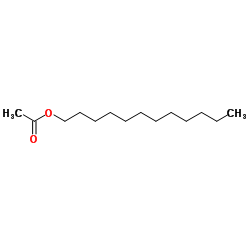Host specific social parasites (Psithyrus) indicate chemical recognition system in bumblebees.
Stephen J Martin, Jonathan M Carruthers, Paul H Williams, Falko P Drijfhout
文献索引:J. Chem. Ecol. 36(8) , 855-63, (2010)
全文:HTML全文
摘要
Semiochemicals influence many aspects of insect behavior, including interactions between parasites and their hosts. We studied the chemical recognition system of bumblebees (Bombus) by examining the cuticular hydrocarbon cues of 14 species, including five species of social parasites, known as cuckoo bees (subgenus Psithyrus). We found that bumblebees possess species-specific alkene positional isomer profiles that are stable over large geographical regions and are mimicked by three host-specific cuckoo parasites. In three host-cuckoo associations where mimicry is poor, possibly due to recent host shifts, these cuckoos produce dodecyl acetate a known chemical repellent that allows the cuckoos to invade their host colonies. Our findings indicate cuckoos use two chemical mechanisms, mimicry and repellents, to invade their hosts, and this may reflect different stages of an ongoing dynamic arms race.
相关化合物
| 结构式 | 名称/CAS号 | 分子式 | 全部文献 |
|---|---|---|---|
 |
乙酸十二烷基酯
CAS:112-66-3 |
C14H28O2 |
|
Do social parasitic bumblebees use chemical weapons? (Hymeno...
2003-10-01 [J. Comp. Physiol. A. Neuroethol. Sens. Neural. Behav. Physiol. 189(10) , 769-75, (2003)] |
|
Developing new anti-cancer drugs.
2011-01-01 [Recent Pat. Anticancer. Drug Discov. 6(1) , 1-5, (2011)] |
|
Capillary electrochromatography column behavior of butyl and...
2005-06-17 [J. Chromatogr. A. 1078(1-2) , 171-80, (2005)] |
|
Slow release of pheromones to the atmosphere from gelatin-al...
2008-09-10 [J. Agric. Food Chem. 56(17) , 8045-9, (2008)] |
|
Charged amphiphiles regulate heart contractility and sarcole...
1985-01-01 [Am. J. Physiol. 248(1 Pt 2) , H147-50, (1985)] |